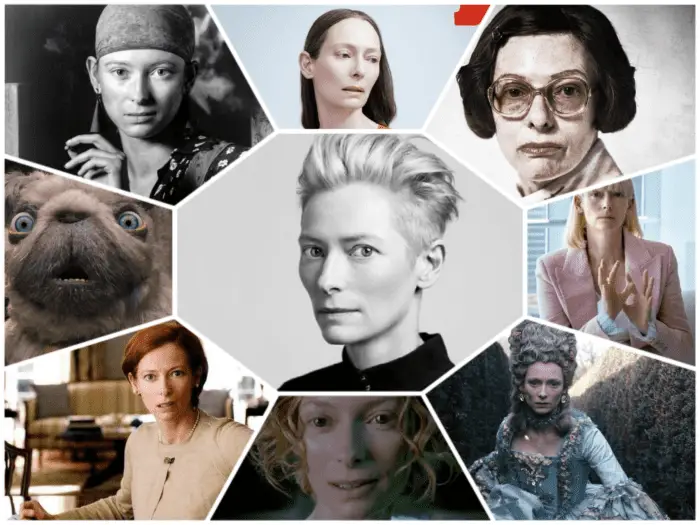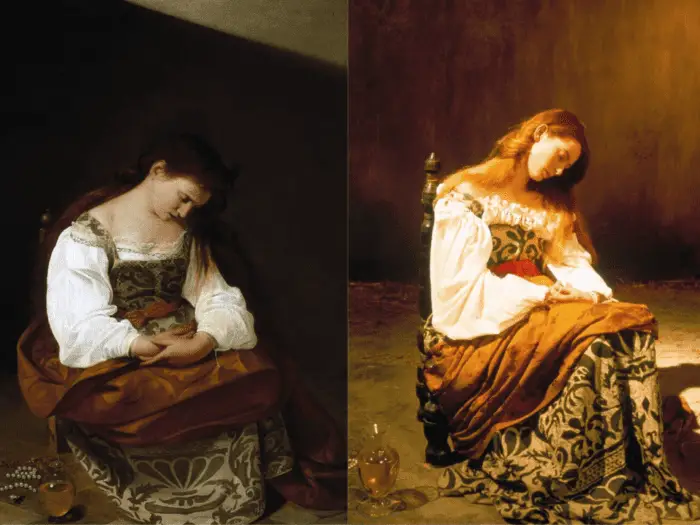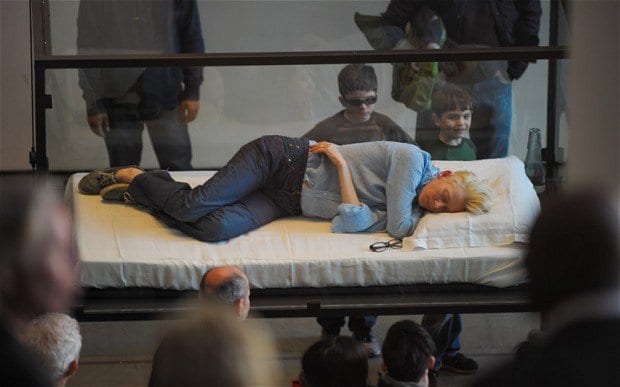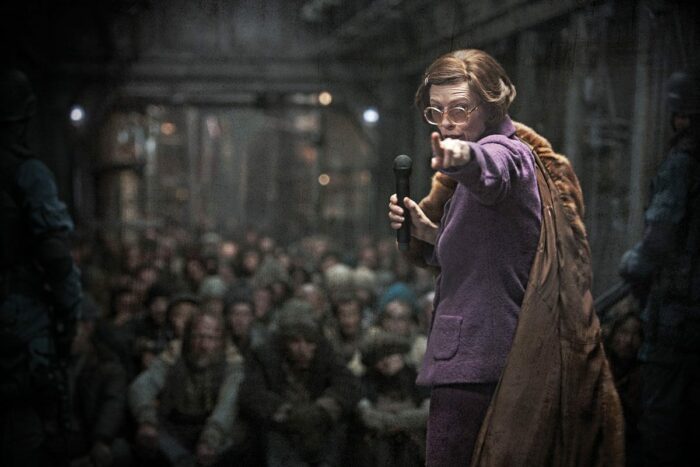It’s scary to write about an actor as talented as Tilda Swinton. Her presence is often so powerful that she is sometimes in danger of eclipsing all others attached to the projects in which she is involved. When 25YL decided that July would be dedicated to a celebration of women, I was very clear that Swinton had to be included. As cinema’s most chameleonic actor, most people have seen her on the big screen, whether it is as a witch in Narnia and Suspiria, a vampire in Only Lovers Left Alive, or as deranged despots in Snowpiercer and Okja. Swinton’s catalogue of films is impressive, and it would be very easy to celebrate her achievements by listing these alone. However, Swinton does not consider herself an actor in the traditional sense and her perception of her oeuvre can often be seen through the lens of art and disguise.

Swinton’s striking physique has been frequently pinpointed as part of her mystique. A myriad of comparisons have been made about her, ranging from David Bowie to Youtuber Jenna Marbles’ dog Kermit (since then she has played both David Bowie in a music video and a dog in a Wes Anderson movie). Swinton herself is fully aware that she does not look like most Hollywood actresses and has elaborated by saying that she “looks like people in paintings”. In fact, her very first role was portraying a woman we only know through paintings: Lena Antognetti, Caravaggio’s female muse.
When Derek Jarman met Swinton, he exclaimed: “I found her” and cast her in the role of this enigmatic Baroque icon. Caravaggio’s paintings are renowned for their intensity, mysticism and drama, manifested in his portraits of Lena in The Penitent Magdalene and Death of the Virgin. For his picture, Jarman combined Swinton’s motion with tableau vivant scenes, where she replicates the paintings with precision. She has always been fascinated with stillness and the concept of “doing nothing”. Moreover, she sees her role as an actor an inactive one, where she is merely the catalyst for the embodiment of a personality. This is why Jarman’s Caravaggio was such a perfect debut for her. It allowed her to become a painting, an image that is still but that carries the emotional weight of centuries. Stills from the film evoke the extraordinary beauty of the original paintings.

After imitating a work of art, the next logical step for Swinton’s career was to become a living exhibit. Mirroring famous performance artists such as Marina Abramović, in 1995 and 2013, Swinton decided to experiment with real-life interactions, culminating in her collaboration with Cornelia Parker. While Abramović prefers to concentrate her efforts on violence and pushes the limits of the female form (check out 1974’s Rhythm 0 for one of the most disturbing art performances ever), The Maybe focused on the ephemerality of the art object, which in this case was Swinton herself. Lying on a bed with only a pair of spectacles and enclosed in a glass case, Swinton would appear at random times throughout the exhibition period, and visitors to the Serpentine Gallery and MoMA respectively could never know if she would be there to be contemplated.

In Snowpiercer and Okja, in cooperation with legendary Korean director Bong Joon-Ho, Swinton takes her mastery of disguise to the next level. In Snowpiercer she plays the part of Mason, a controlling, order-obsessed Minister who is in command of a train that carries Earth’s last population. Transformed almost beyond recognition, wearing huge pink glasses (found in Swinton’s daughter’s toy box) and a set of misshapen teeth, Mason is a far cry from the ethereal women we have been used to seeing Swinton depict. She also researched the posture and gestures of Margaret Thatcher to truly embody this autocratic politician. Fascinatingly, the role of Mason was initially conceived as a “mild-mannered man” in a suit, but that quickly changed when Swinton expressed interest in the project. Gender-swapping is an integral part of Swinton’s career, commencing with the eponymous role in Sally Potter’s Orlando. Through Mason, Swinton created one of the first non-binary villains, who is referred to as both “Sir” and “She” throughout the narrative.

This duality is reflected in Joon-ho’s second film with Swinton, Okja, where she teases the viewer by playing double roles. Whereas in Orlando, Swinton portrayed a character that fluctuated between different bodies, in Okja she played two separate characters, making us wonder for a brief moment if she had a secret twin sister. As Lucy and Nancy Mirando, two evil siblings in charge of a major corporation, Swinton seized the opportunity to question issues such as inheritance, capital, and fame. Channelling power-hungry figures such as Ivanka Trump, Lucy, and Nancy blur the distinction between hysteria and seriousness, resulting in a performance that is gloriously camp.

Swinton would continue to confuse the audience with her signature doppelganger appearances, baffling audiences in 2018’s Suspiria by portraying not one, not two, but three characters, including the role of an aged male doctor. Likewise, she has not stopped creating performance art. In 2015, somewhat bizarrely, Swinton starred at the Pitti Uomo menswear show in Florence, during which she caressed, licked, and had conversations with items of clothing, reminiscent of the work of surrealist artists such as Salvador Dalí. Furthermore, a photographic exhibition curated by Swinton and inspired by Virginia Woolf’s novel Orlando, has recently been on display at the Aperture Gallery in New York, where she draws the emphasis away from the body and centres on the concept of androgyny and nature.

I love Tilda Swinton’s polymorphic approach to culture. She is a performer who constantly fluctuates between motion and stillness; as well as disrupting and breaking down gender stereotypes. Like Viola in Shakespeare’s Twelfth Night, who says “I am not what I am”, Swinton is multiform as an actor and artist. With several upcoming projects, including Joanna Hogg’s The Souvenir, Wes Anderson’s The French Dispatch, and Apichatpong Weerasethakul’s Memoria, viewers look forward to seeing what form Tilda Swinton will take on next.



